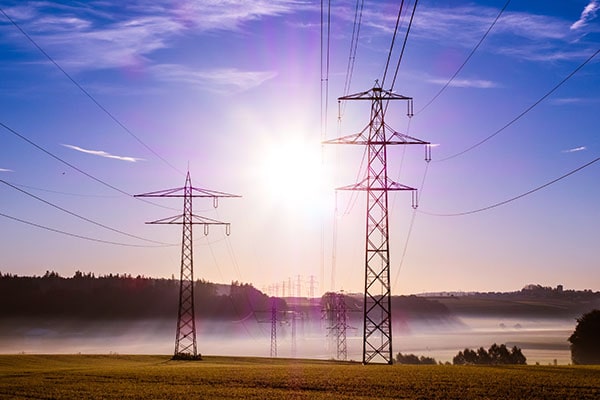
Recent developments in AI are changing how the electric utilities sector approaches energy transition. The processing power of AI will be essential in managing the grid as renewables account for a larger share of energy supply and access to reliable power becomes even more important with growing demand from electrification. Specifically, AI is helping electric utilities integrate renewable energy into the grid, track and maintain assets, enhance grid integrity, and create energy efficient smart buildings.
AI and ML is allowing electric utilities to seamlessly integrate renewable electricity into the grid. As renewables grow their share of the energy supply, one of the major critiques is inconsistency in supply. If the sun does not shine or the wind does not blow, the amount of renewable electricity available drops significantly. Supply forecasting tools enabled by AI and ML can more accurately predict the amount of renewable electricity available for use than current means. When paired with similar tools for forecasting energy demand, supply forecasting tools allow utilities to use renewable power more efficiently and supplement power generation using conventional sources when needed.
Another aspect of integrating renewables into the grid is managing the growing popularity of consumer generated renewable electricity. In the case of home solar panels, net metering allows consumers to export excess renewable electricity back to the grid reducing the cost of their future electric bills. This two-way flow and advanced metering are some of the main aspects of smart grids which ADI has covered more deeply in Growth Drivers for Smart Grids. AI will be key in further developing these smart grids and processing the substantial amounts of information involved with tracking the evolving two-way flow of electricity.

Exhibit 1. Examples of companies utilizing AI in utilities
With the issue of consistent energy supply solved, AI can also be used to prevent grid failures and bolster grid integrity. Afterall, a reliable energy supply is most beneficial when the network to distribute it is just as reliable and secure.
The first step in preventing grid failures is proper asset tracking and maintenance to prevent failures caused by old or faulty equipment. As discussed in previous blogs on the impact of AI in both oil and gas and chemicals, one of the most popular applications for AI and ML across industries is facilitating predictive maintenance. With continuous monitoring and ML algorithms, electric utilities can identify potential faults ahead of time, accurately predict when voltage cables need replaced, and spot defects in customer’s equipment. To prove the potential benefit of predictive maintenance, utility company E.ON found in its research that predictive maintenance could reduce grid outages by up to 30% compared to conventional approaches.
After applying AI-enhanced asset tracking and maintenance to reduce internal grid failures, the next step in bolstering grid integrity is protecting against external factors. External sources for grid failures could be physical like an overgrown tree or digital like potential cyber-attacks. Cameras and drones equipped with AI-powered computer vision can monitor and identify dangerous conditions like tree branches encroaching on power lines. By identifying conditions like these and taking appropriate action, trimming the tree branches, the risk of grid failure and environmental disasters like wildfires is reduced. AI-powered applications that can detect anomalies in consumption patterns, payment history, and customer data help strengthen the grid’s defenses against cyber-attacks, fraud, and theft.
Smart buildings are another growing application for AI in the utilities sector. AI and ML is being used to create futuristic smart buildings capable of reducing energy costs and carbon emissions, improving occupant health through comfort management, and increasing productivity from systems and people alike. Smart buildings constantly collect data on temperatures, pressures, and more which AI can quickly process and use to optimize building conditions. For example, energy consumption can be optimized by adjusting heating, cooling, and lighting based on weather conditions and occupancy patterns.
Having discussed how utilities are integrating renewable energy, conducting predictive maintenance, improving grid integrity, and developing smart buildings with AI, we will round out our series on how AI is driving growth in the global economy by covering how industrials and mining are utilizing AI to improve their operations.
-Piercen Hoekstra
ADI Analytics is a prestigious, boutique consulting firm specializing in oil & gas, energy transition, and chemicals since 2009. We bring deep, first-rate expertise in a broad range of markets including oil & gas, chemicals, and utilities, where we support Fortune 500, mid-sized and early-stage companies, and investors with consulting services, research reports, and data and analytics, with the goal of delivering actionable outcomes to help our clients achieve tangible results.
We also host the ADI Forum, one of Houston’s distinguished industry conferences, to bring c-suite executives from oil & gas, energy transition, and chemicals together for meaningful dialogue and strategic insights across the value chains.
Subscribe to our newsletter or contact us to learn more.



















